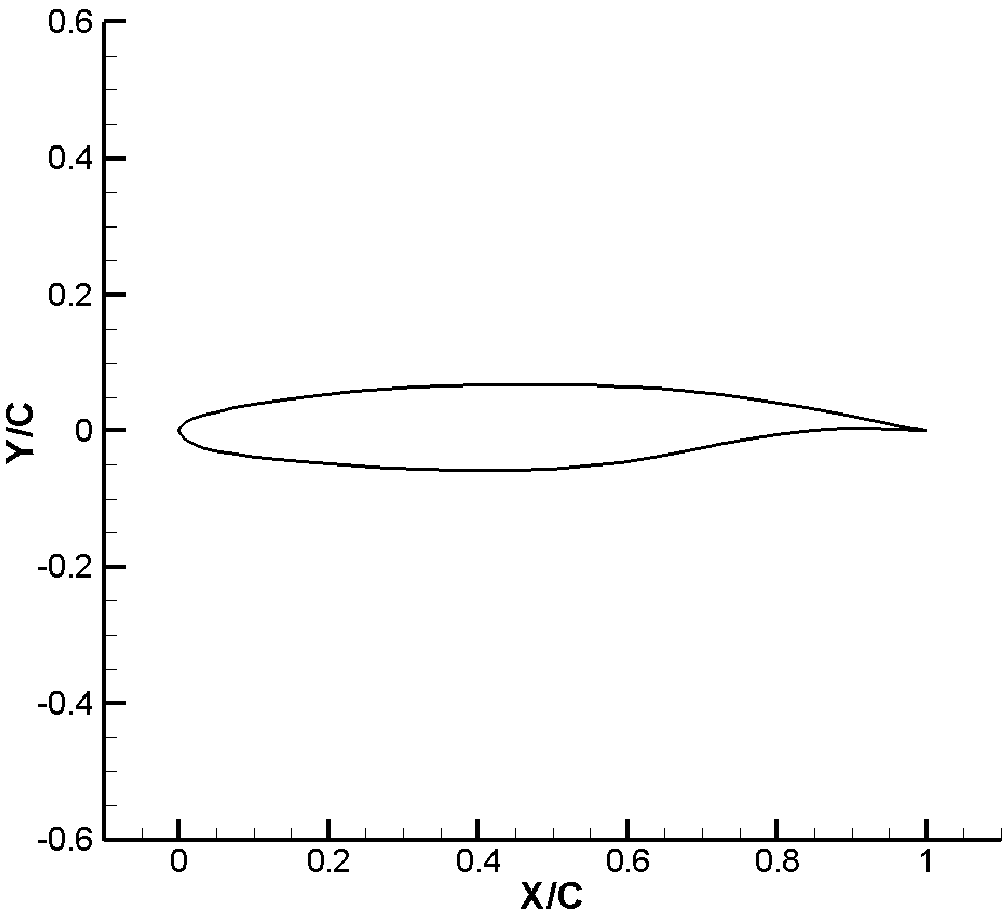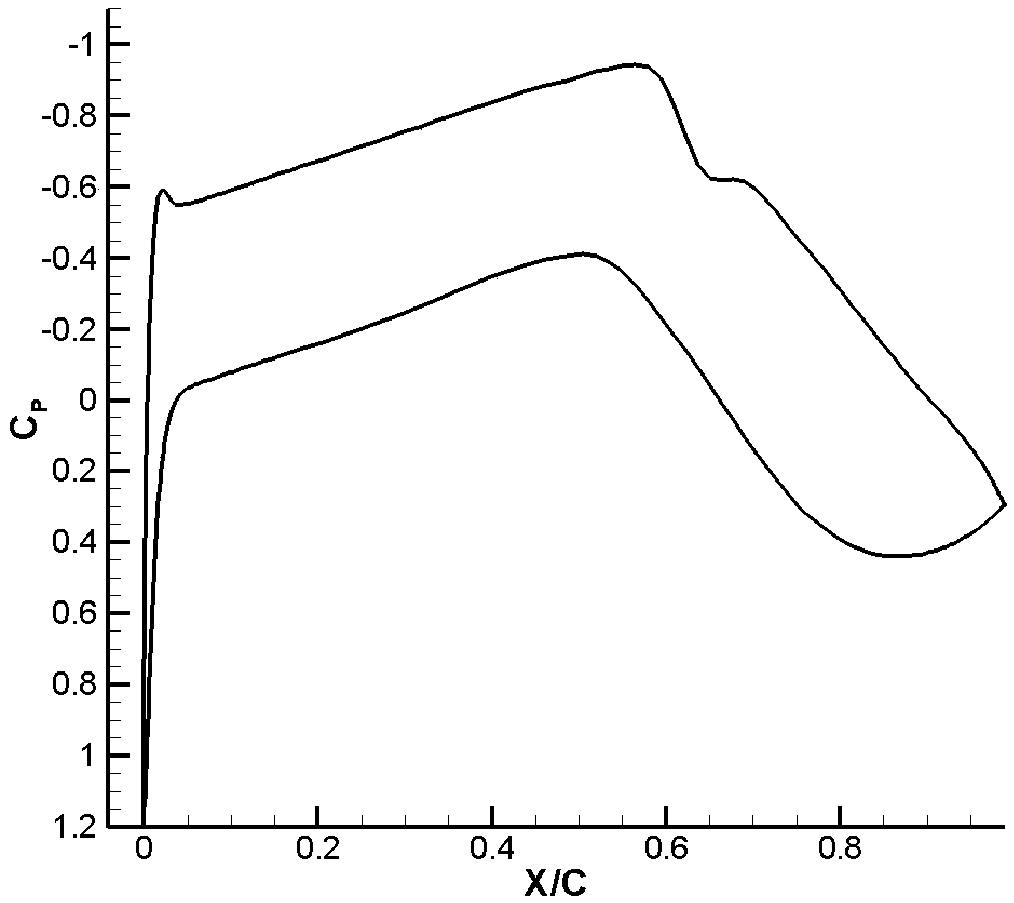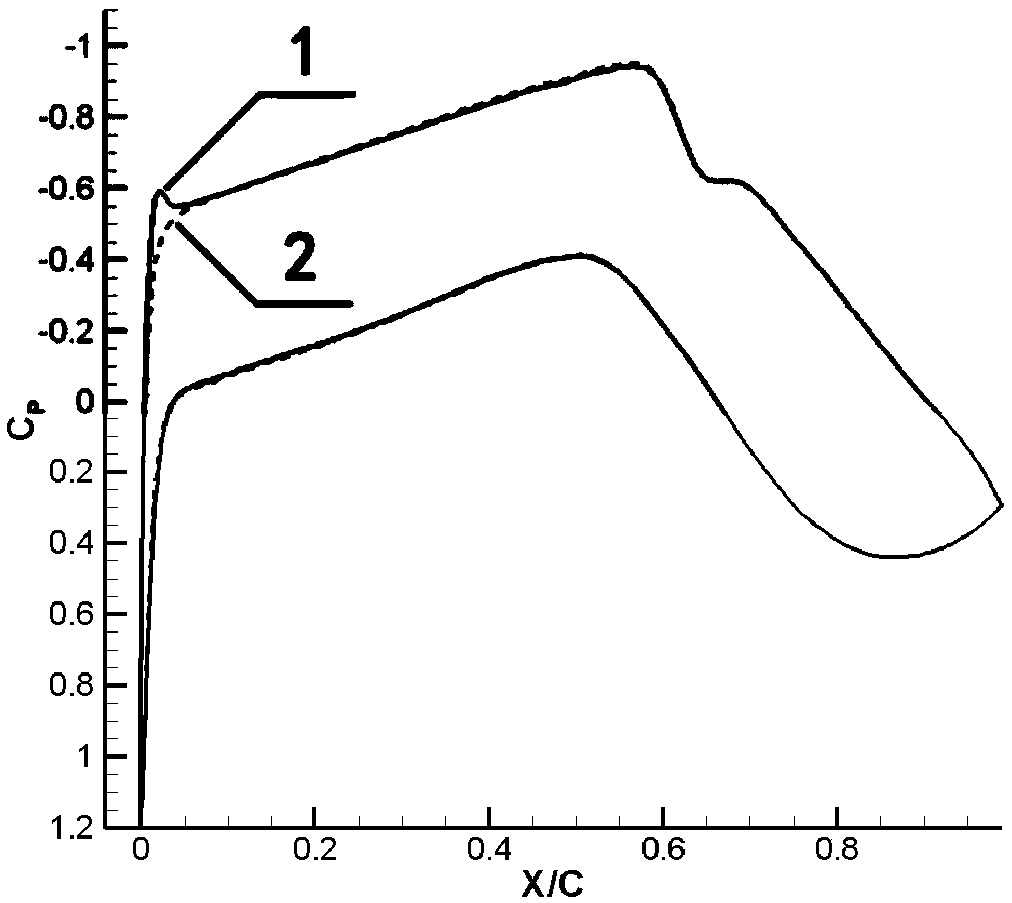A natural laminar supercritical airfoil applied to the swept wing of medium-range civil aircraft
A swept wing, supercritical technology, applied in the direction of wing, wing shape, aircraft parts, etc., can solve the problem that the surface of the wing is difficult to maintain a large-scale natural laminar flow, etc., to improve economy and environmental protection, reduce The effect of small fuel consumption and carbon dioxide emission reduction
- Summary
- Abstract
- Description
- Claims
- Application Information
AI Technical Summary
Problems solved by technology
Method used
Image
Examples
Embodiment Construction
[0034] In order to make the technical problems, technical solutions and beneficial effects solved by the present invention clearer, the present invention will be further described in detail below in conjunction with the accompanying drawings and embodiments. It should be understood that the specific embodiments described here are only used to explain the present invention, not to limit the present invention.
[0035] Civil aircraft cruising at high subsonic speeds generally adopt a swept-back wing design to delay shock wave generation. The boundary layer of the swept wing is affected by the lateral pressure gradient, and the velocity type has a cross-flow component. The inflection point of the cross-flow velocity pattern will cause cross-flow CF wave instability. In contrast to two-dimensional TS waves, cross-flow CF wave instabilities are amplified in the region of the parabaric gradient. The existing natural laminar flow supercritical airfoils are not designed for the appl...
PUM
 Login to View More
Login to View More Abstract
Description
Claims
Application Information
 Login to View More
Login to View More - R&D
- Intellectual Property
- Life Sciences
- Materials
- Tech Scout
- Unparalleled Data Quality
- Higher Quality Content
- 60% Fewer Hallucinations
Browse by: Latest US Patents, China's latest patents, Technical Efficacy Thesaurus, Application Domain, Technology Topic, Popular Technical Reports.
© 2025 PatSnap. All rights reserved.Legal|Privacy policy|Modern Slavery Act Transparency Statement|Sitemap|About US| Contact US: help@patsnap.com



